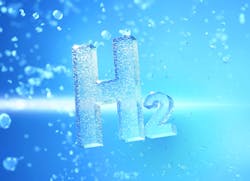NewHydrogen and UC Santa Barbara Collaborate to Produce Cheap Green Hydrogen
NewHydrogen will work with chemical and materials engineers at UC Santa Barbara to develop a way to split water into cheap green hydrogen with a thermochemical approach, using heat instead of electricity, under a research agreement.
NewHydrogen CEO Steve Hill stated that the UC Santa Barbara technology team, led by Dr. Philip Christopher, plans to study the features of molten liquids to directly split water continuously in a single redox chemical loop, to produce hydrogen and oxygen in separate chambers.
With heat and water, the team is developing a novel Molten Catalytic Liquid, which can be reduced in one chamber, oxidized in another chamber, and can be continuously recycled and reused. This technology named NewHydrogen ThermoLoop is a high-efficiency thermochemical water-splitter that uses low-cost materials and industrial temperatures of less than 1,000°C to produce cheap green hydrogen.
Hill added that another UCLA technology team, led by Dr. Yu Huang, has advanced efforts to replace and reduce expensive rare earth materials used as catalysts in conventional electrolyzers. Electrolyzers can help achieve a green hydrogen economy until a new technology, which does not rely on electricity as the input energy to make hydrogen, is developed.
“NewHydrogen has the potential to disrupt the entire hydrogen industry by dramatically lowering the cost of green hydrogen by using cheap heat and any source of cheap water,” said Steve Hill. “Depending on relative world costs and availability of hydrocarbon feedstocks, our disruptive technology has the potential to produce green hydrogen at a lower cost than grey hydrogen made from natural gas, or blue hydrogen made from natural gas with carbon capture.”
Considering the goal to achieve net-zero emissions by 2050, Goldman Sachs anticipates demand for green hydrogen to reach a market value of $12 trillion.
